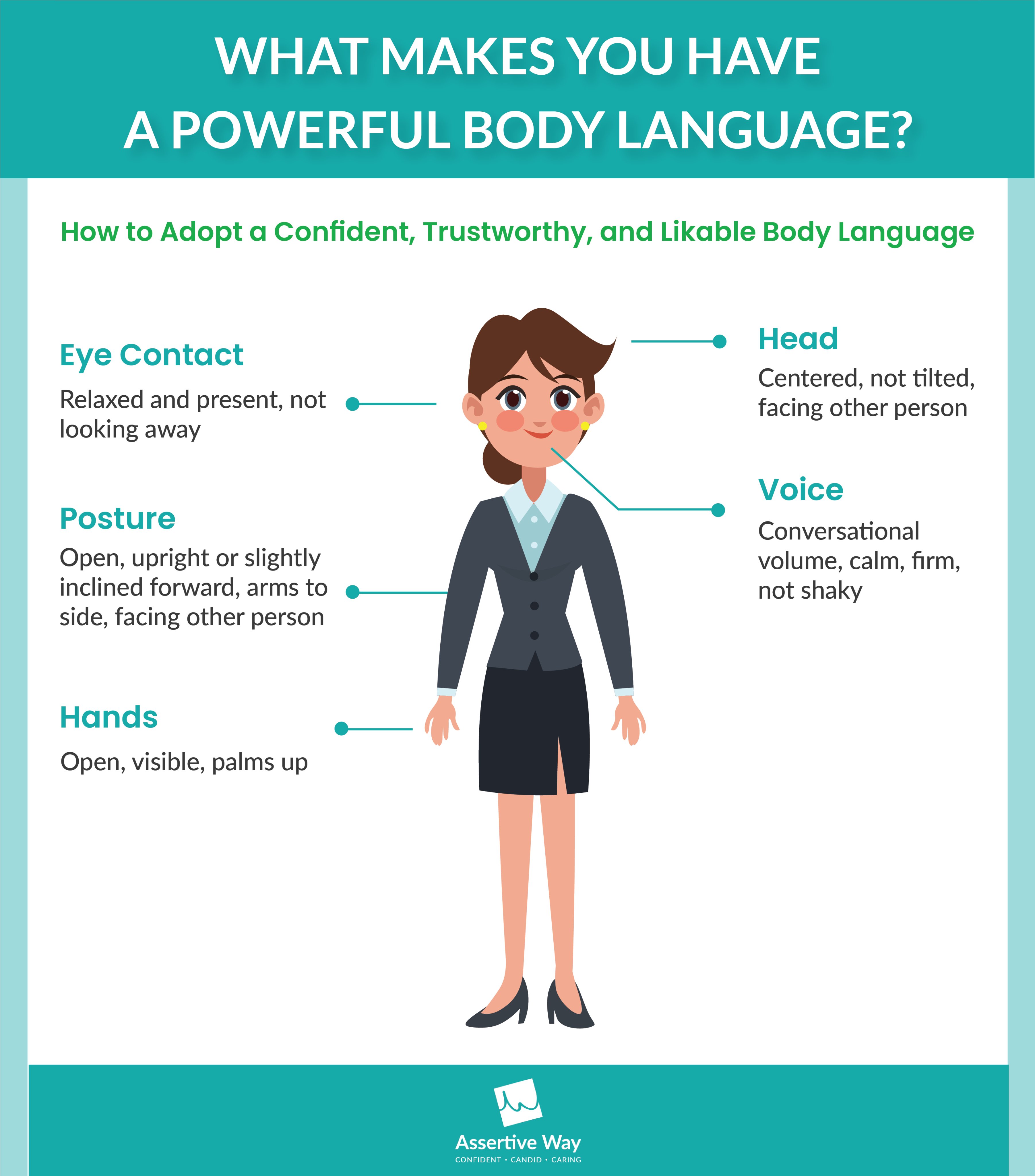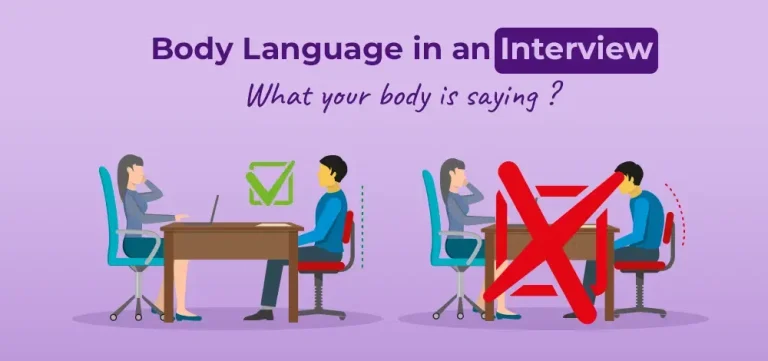Assertive Body Language
Do you ever find it challenging to express yourself confidently? Well, let me tell you about a powerful tool that can help you communicate your thoughts and opinions with assurance: assertive body language. When you project confidence through your body, it can make a world of difference in how others perceive you. So, let’s dive in and explore the fascinating world of assertive body language together.
Imagine standing tall with your head held high, making eye contact, and speaking with conviction. That’s the essence of assertive body language. It’s about using your posture, gestures, and expressions to convey confidence and authority. The best part is, anyone can learn and practice these techniques to boost their self-esteem and improve their communication skills.
Whether you’re giving a presentation, participating in a group discussion, or simply having a conversation, assertive body language can help you come across as more credible and persuasive. It not only influences how others perceive you but also impacts how you feel about yourself. So, if you’re ready to unlock your inner confidence and enhance your communication skills, let’s explore the world of assertive body language together.
Master the Art of Confidence: Expressing yourself through body language can make a powerful impact. Discover the secrets of assertive body language and boost your confidence with these effective techniques. Make direct eye contact, maintain a strong posture, and use confident hand gestures. Embodying assertive body language will project confidence and command respect in any situation. Own the room and leave a lasting impression!
Assertive Body Language: Unleashing Confidence and Power
In today’s competitive world, effective communication goes beyond just the words we speak. Our body language plays a crucial role in conveying our thoughts, emotions, and intentions. One of the most impactful forms of body language is assertive body language. Assertive body language is the key to projecting confidence, establishing authority, and commanding respect in both personal and professional settings. In this article, we will explore the significance of assertive body language, understand its powerful impact, and discover valuable tips to master this essential skill.
The Science Behind Assertive Body Language
Before delving into the intricacies of assertive body language, it’s important to understand the science behind it. Our body language is a complex interplay of posture, gestures, facial expressions, and eye contact, all of which contribute to how we are perceived by others. Assertive body language is characterized by open and expansive postures, such as standing tall with shoulders back, maintaining eye contact, and utilizing purposeful gestures. When we adopt assertive body language, our brains receive cues that boost our confidence, reduce stress levels, and signal to others that we are self-assured and in control.
The Power of Posture and Presence
Posture is one of the most influential components of assertive body language. When we stand or sit with an upright posture, we convey strength, confidence, and a sense of purpose. Slouching or hunching, on the other hand, communicates insecurity and lack of conviction. By maintaining good posture, we not only project confidence but also experience its benefits on a physiological level. Good posture increases oxygen intake, enhances blood flow, and improves overall well-being. So, straighten that back, lift that chin, and feel the power coursing through your veins!
In addition to posture, our presence also plays a major role in assertive body language. The way we occupy physical space and the energy we emit can make a lasting impression on others. When we command space by standing or sitting assertively, it signals that we believe we deserve to be heard and respected. Assertive presence involves being fully engaged in the present moment, displaying active listening skills, and exuding a calm and composed demeanor. By mastering the art of presence, we can make an indelible impact on our interactions.
The Art of Eye Contact and Speaking with Confidence
Eye contact is a powerful tool in assertive body language. Maintaining direct eye contact shows that we are attentive, engaged, and confident in our intentions. It builds trust and establishes a connection with the person we are communicating with. However, it is important to strike a balance and not come across as intimidating or aggressive. By practicing soft eye contact, our gaze will be warm and inviting, while still conveying a sense of authority and self-assurance. Remember, your eyes are the windows to your soul!
Another element of assertive body language is speaking with confidence. The way we speak can either reinforce or undermine our assertiveness. By using a strong, clear, and steady voice, we can effectively convey our thoughts and ideas. It’s important to speak at a moderate pace, avoiding rushed or hesitant speech patterns. Maintaining a steady tone and volume shows that we are in control of our message and instills credibility in our words. Speaking with confidence not only influences how others perceive us but also boosts our own self-confidence.
The Subtle Power of Gestures and Expressions
In addition to posture, presence, eye contact, and speech, gestures and facial expressions are vital components of assertive body language. Purposeful and controlled gestures can emphasize our message, convey passion, and add depth to our communication. However, it is important to avoid excessive or distracting gestures that may detract from our intended message. Additionally, facial expressions play a crucial role in body language. An emotionally expressive face can help convey empathy, enthusiasm, and sincerity. By mastering the art of subtle but impactful gestures and expressions, we can enhance our overall assertiveness and persuasive abilities.
Mastering Assertive Body Language: Practical Tips for Success
Now that we understand the power of assertive body language, let’s dive into some practical tips on how to incorporate it into our daily lives:
1. Practice in front of a mirror:
Stand in front of a mirror and practice different postures, gestures, and facial expressions. Observe the impact they have on your confidence and presence.
2. Take note of your body language:
Throughout the day, be aware of your body language and make adjustments when necessary. Pay attention to your posture, eye contact, and the messages you convey through gestures and expressions.
3. Emulate confident individuals:
Observe confident individuals in your personal or professional life and take note of their body language. Emulate their confident postures, gestures, and expressions to incorporate them into your own repertoire.
4. Seek feedback:
Ask a trusted friend, mentor, or colleague to provide feedback on your body language. They may offer valuable insights and suggestions for improvement.
5. Practice active listening:
Assertive body language goes hand in hand with active listening. Practice genuinely listening to others, maintaining eye contact, and nodding or providing non-verbal cues to show your engagement.
6. Visualize success:
Before important meetings or presentations, take a moment to visualize yourself exuding confident and assertive body language. This mental rehearsal can help boost your actual performance.
With consistent practice and mindfulness, assertive body language can become a natural and empowering part of your communication style. Remember, your body speaks volumes, so let it convey the powerful message of confidence and self-assurance you want the world to hear.
Key Takeaways – Assertive Body Language
- Confidence comes from standing tall and maintaining good posture.
- Make direct eye contact to show your assertiveness.
- Use open and expansive gestures to appear confident.
- Speak clearly and firmly to convey assertiveness.
- Practice active listening to show you are engaged and assertive.
Frequently Asked Questions
Assertive body language can have a significant impact on how others perceive you. By using confident and assertive non-verbal cues, you can convey strength and presence in various social and professional situations. Here are some frequently asked questions about assertive body language:
1. How can I display assertiveness through my body language?
Displaying assertiveness through body language involves a combination of confident postures, gestures, and facial expressions. Stand tall with good posture, keeping your shoulders back and your head held high. Maintain eye contact with others, as it showcases your attentiveness and confidence. Use hand gestures purposefully and with control, emphasizing your points and engaging your audience. Additionally, make sure your facial expressions reflect determination and composure.
Remember, assertive body language is about projecting confidence, but it’s also important to be authentic. Find a balance that works for you and allows you to express yourself effectively while still being true to who you are.
2. Is assertive body language the same as aggressive body language?
No, assertive body language and aggressive body language are not the same things. While both can display confidence, assertive body language is about expressing yourself confidently while respecting the boundaries and feelings of others. Aggressive body language, on the other hand, often involves intimidating behaviors, invading personal space, and disregarding others’ opinions or needs.
Assertive body language is about establishing a sense of equality and mutual respect in your interactions, whereas aggressive body language can create tension and discomfort. It’s important to distinguish between the two and strive for assertiveness rather than aggression in your communication.
3. How can assertive body language help me in a job interview?
Assertive body language can greatly benefit you in a job interview as it helps create a positive impression on the interviewer. By displaying confidence and assertiveness, you convey that you believe in your abilities and are the right candidate for the role. Maintaining eye contact, using open and expansive gestures, and sitting up straight with good posture demonstrates your professionalism and self-assurance.
Moreover, assertive body language can enhance your communication skills during the interview. It can help you speak clearly, express your thoughts effectively, and engage with the interviewer with ease. By projecting confidence through your body language, you increase your chances of leaving a lasting and favorable impression on the interviewer.
4. Can assertive body language improve my leadership skills?
Absolutely! Assertive body language is closely associated with effective leadership. As a leader, it’s important to exude confidence, maintain a strong presence, and inspire others. By using assertive body language, you can establish your authority and gain the respect and trust of your team members.
A confident posture, direct eye contact, and purposeful hand movements can all contribute to projecting a strong and assertive leadership style. Additionally, assertive body language helps you communicate your expectations clearly and directly, which is integral to successful leadership. By consistently displaying assertive body language, you can become a more influential and respected leader.
5. Can I practice assertive body language in everyday interactions?
Absolutely! Assertive body language can be beneficial in various everyday interactions, from social gatherings to professional meetings. In social settings, it can help you convey confidence, make a positive impression, and effectively engage with others. Simple adjustments like maintaining eye contact, adopting an open and relaxed posture, and using appropriate gestures can make a significant difference.
In professional settings, assertive body language can contribute to improved communication, enhanced relationships, and increased effectiveness in negotiation or persuasion. It allows you to express your ideas and needs clearly and confidently, making you more influential in your interactions. Recognizing the power of assertive body language and practicing it in everyday situations can positively impact your personal and professional relationships.
Assertive Body Language l THE BIG ONES (4 Tips)
Summary
Assertive body language can help you project confidence and establish boundaries without being aggressive. It involves making eye contact, standing or sitting upright, and using open gestures. By practicing assertive body language, you can improve your communication skills and build positive relationships with others.
Remember that assertiveness is about expressing your needs and opinions respectfully, while also listening to others. It’s important to find a balance between being assertive and being understanding. So, next time you want to make a strong impression or stand up for yourself, try using assertive body language to convey your message effectively.



